
Pope Cornelius was the bishop of Rome from 6th or 13th March 251 until his martyrdom in June 253. He was pope during and following a period of persecution of the church, while a schism occurred over how repentant church members who had practiced pagan sacrifices to protect themselves could be readmitted to the church. He agreed with Cyprian of Carthage that those who had lapsed could be restored to communion after varying forms of Reinitiation and Penance. This position was in contrast to the Novatianists, who held that those who failed to maintain their confession of faith under persecution would not be received again into communion with the church. This resulted in a short-lived schism in the Church of Rome that spread as each side sought to gather support. Cornelius held a synod that confirmed his election and excommunicated Novatian, but the controversy regarding lapsed members continued for years.

Denis of Paris was a 3rd-century Christian martyr and saint. According to his hagiographies, he was bishop of Paris in the third century and, together with his companions Rusticus and Eleutherius, was martyred for his faith by decapitation. Some accounts placed this during Domitian's persecution and incorrectly identified St Denis of Paris with the Areopagite who was converted by Paul the Apostle and who served as the first bishop of Athens. Assuming Denis's historicity, it is now considered more likely that he suffered under the persecution of the emperor Decius shortly after AD 250.

June 3 - Eastern Orthodox Church calendar - June 5
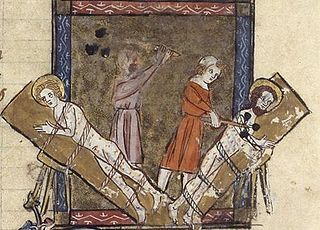
Gervasius and Protasius are venerated as Christian martyrs, probably of the 2nd century. They are the patron saints of Milan and of haymakers and are invoked for the discovery of thieves. Their feast day in the Latin Rite of the Catholic Church is 19 June, the day marking the translation of their relics. In the Eastern Orthodox Church and in the Eastern Rites of the Catholic Church, their feast takes place on 14 October (O.S.)/24 October (N.S.), the traditional day of their death. In Christian iconography their emblems are the scourge, the club and the sword.

Saint Julian of Le Mans is a saint venerated in both the Roman Catholic and Orthodox Church, honoured as the first bishop of Le Mans. His feast day is 27 January. The translation of his relics is celebrated on 25 July.

A cephalophore is a saint who is generally depicted carrying their own severed head. In Christian art, this was usually meant to signify that the subject in question had been martyred by beheading. Depicting the requisite halo in this circumstance offers a unique challenge for the artist: some put the halo where the head used to be, others have the saint carrying the halo along with the head, and some split the difference. Associated legends often tell of the saint standing and carrying their own head after the beheading.
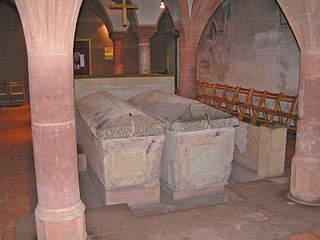
Saint Eucharius is venerated as the first bishop of Trier. He lived in the second half of the 3rd century.
Saint Remaclus was a Benedictine missionary bishop.

Saints Victor and Corona are two Christian martyrs. Victor was a Roman soldier who was tortured and killed; Corona was killed for comforting him. Corona is invoked as a patron of causes involving money; she was not historically associated with pandemics or disease, but has been invoked against the coronavirus pandemic.

Justus of Beauvais is a semi-legendary saint of the Roman Catholic Church. He may have been a Gallo-Roman martyr, but his legend was confused with that of other saints, such as Justin of Paris.

Saints Marcellinus and Peter are venerated within the Catholic Church as martyrs who were beheaded. Hagiographies place them in 4th century Rome. They are generally represented as men in middle age, with tonsures and palms of martyrdom; sometimes they hold a crown each.
Peregrine (Peregrinus) of Auxerre is venerated as the first bishop of Auxerre and the builder of its first cathedral. A strong local tradition states that he was a priest of Rome appointed by Pope Sixtus II to evangelize this area at the request of the Christians resident in that part of Gaul. He preached at Marseilles, Lyon, and converted most of the inhabitants of Auxerre to Christianity.
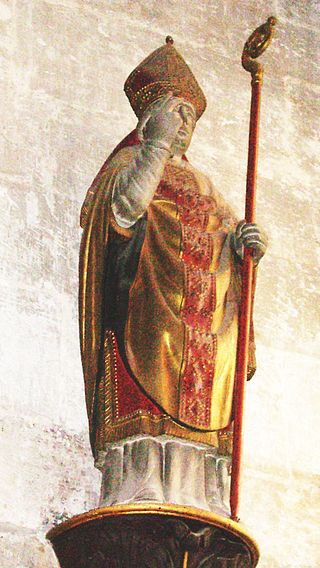
Saint Maximus of Évreux, called Saint Mauxe locally, is venerated as a saint by the Catholic Church and the Eastern Orthodox Church. His legend states that he was the second bishop of Évreux, and that he died a martyr at Acquigny with his brother, who was his deacon. His brother is called Venerandus (Vénérand) or Victorinus.
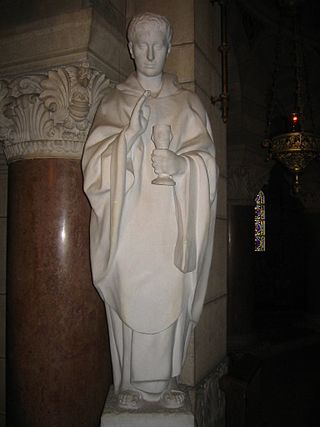
Saints Ferreolus and Ferrutio are venerated as martyrs and saints by the Catholic Church, especially in Besançon where they are honored as its patron saints.
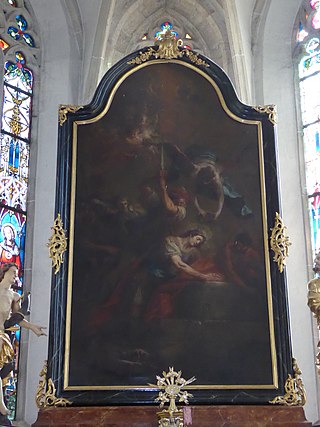
Quirinus of Tegernsee, or Quirinus of Rome, is venerated as a martyr and saint of the third century.

Quirinus of Neuss, sometimes called Quirinus of Rome is venerated as a martyr and saint of the Catholic and Eastern Orthodox churches. His cult was centred at Neuss in Germany, though he was a Roman martyr.
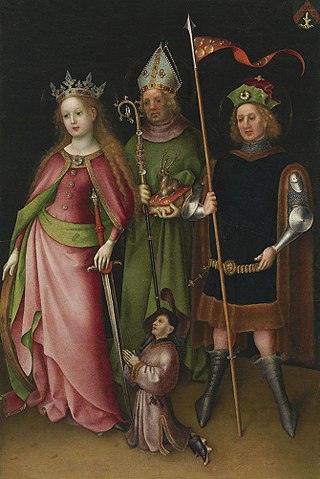
The Four Holy Marshals are four saints venerated in the Rhineland, especially at Cologne, Liège, Aachen, and Eifel. They are conceived as standing particularly close to throne of God, and thus powerful intercessors. Their joint veneration is comparable to that of the Fourteen Holy Helpers, who are also venerated in the Rhineland.
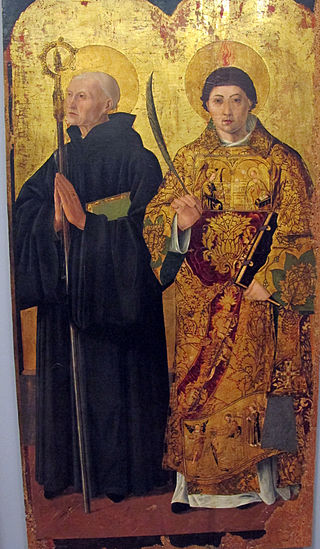
Saint Sossius or Sosius was Deacon of Misenum, an important naval base of the Roman Empire in the Bay of Naples. He was martyred along with Saint Januarius at Pozzuoli during the Diocletian Persecutions. His feast day is September 23, the date, three days after his death, on which his corpse was translated to Misenum.

The Princely Abbey of Stavelot-Malmedy, also Principality of Stavelot-Malmedy, sometimes known with its German name Stablo, was an ecclesiastical principality of the Holy Roman Empire. Princely power was exercised by the Benedictine abbot of the imperial double monastery of Stavelot and Malmedy, founded in 651. Along with the Duchy of Bouillon and the Prince-Bishopric of Liège, it was one of only three principalities of the Southern Netherlands that were never part of the Spanish Netherlands, later the Austrian Netherlands, which after 1500 were assigned to the Burgundian Circle while the principalities were assigned to the Lower Rhenish Imperial Circle.
Saint Nicasius of Rouen, often known as the Apostle of the Vexin, was a 3rd-century saint and martyr in Gaul. He is sometimes considered the first Bishop of Rouen, although probably incorrectly.



















